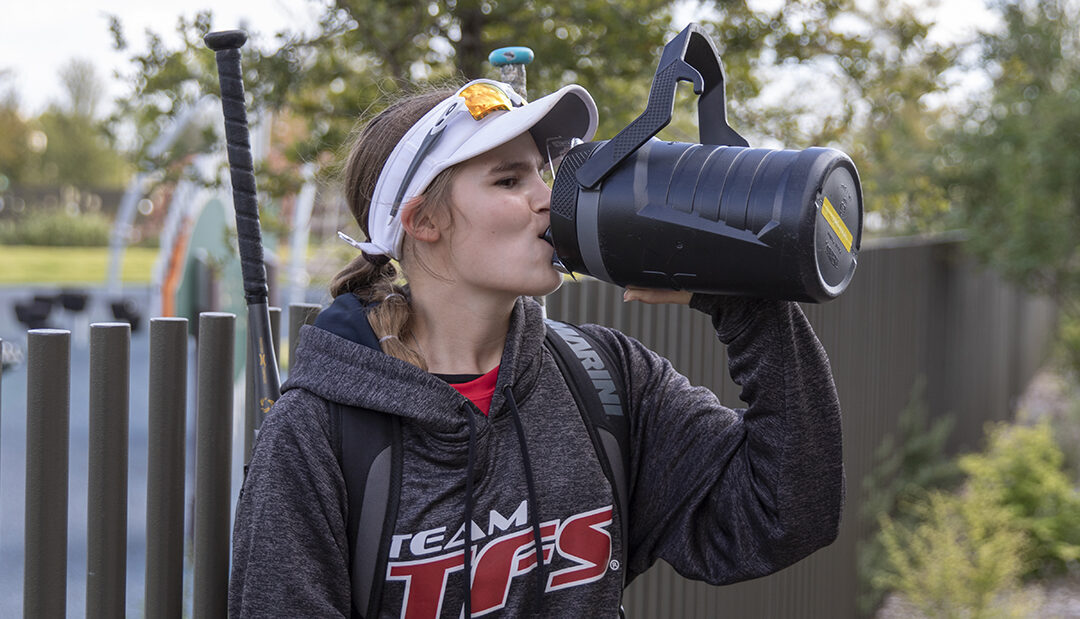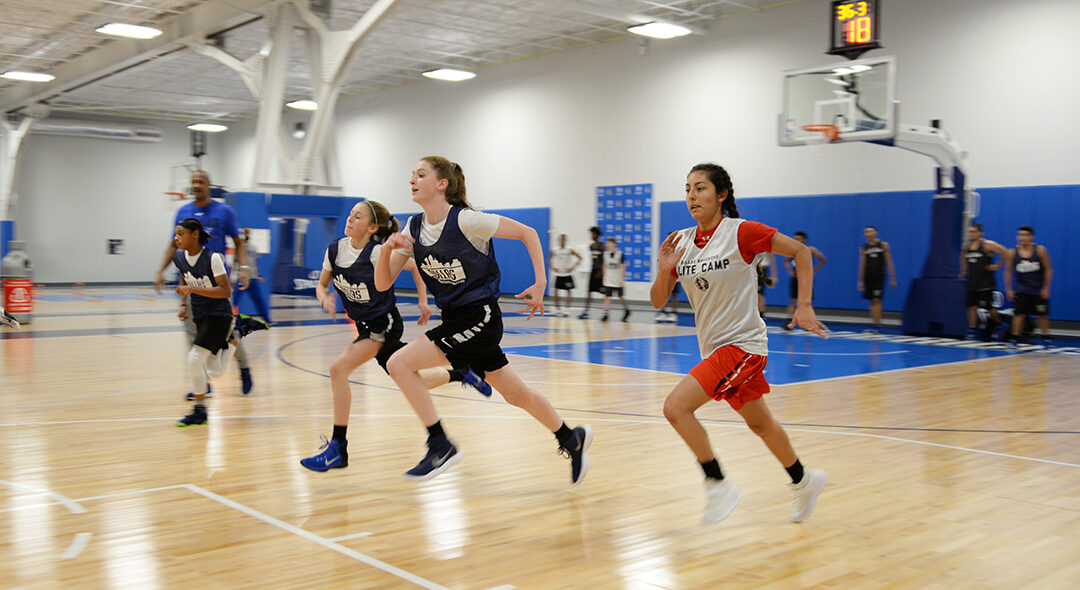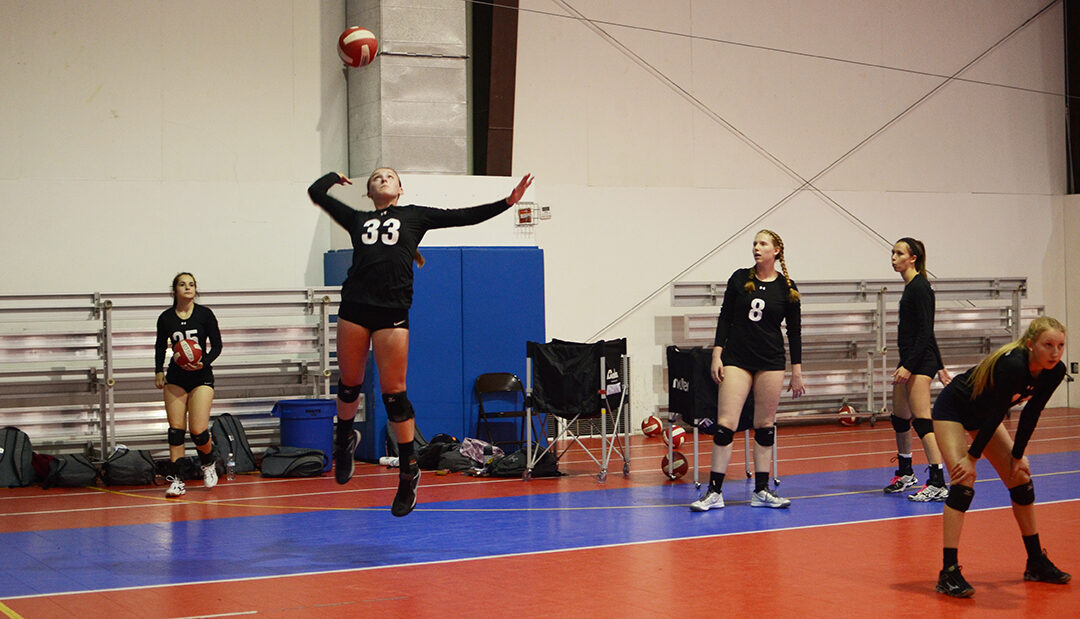


Nutrition Tips for Young Athletes in Stop-and-Go Sports
Alternating periods of intense power and speed, with short or long periods of rest, involve all of the major energy systems in the body. Therefore, meals and snacks throughout the day for these athletes should include appropriate mix of all foods and nutrients.
“It’s easy for busy young athletes to not make food a priority, showing up for practices and games under fueled and thinking they can power through”, says certified sports dietitian Taylor Morrison, M.S., R.D., CSSD, L.D. “However, the reality is that food and nutrition are very important components to optimal performance and injury prevention. The good news is that this food and nutrition doesn’t have to be complicated. An athlete can incorporate simple meals, snacks and fluids throughout the day using some general guidelines thereby reducing concerns and optimizing health and performance”.
CONCERNS FOR THE YOUNG ATHLETE IN STOP-AND-GO SPORTS
Burning Out Early
Because of the intensity of some stop-and-go sports (like basketball, soccer, tennis and hockey) and because of the length of some games (like baseball or football) and tournaments (like basketball, soccer, tennis and volleyball), young athletes can use up their energy stores before the event is over. This especially becomes a problem if the athlete has not eaten a proper meal or snack earlier in the day or prior to the event and does not bring appropriate snacks for during the event.
End of the Season Injury
If this pattern of burnout continues, the constant fatigue during events can put the athlete at increased risk of injury due to decreased motor skills and performance. Poor nutrition or under-fueling can also lead to a lack of important nutrients like protein, fat, iron, calcium and vitamin D, which can also increase an athlete’s risk of injuries like stress fractures.
Dehydration
Dehydration is another contributor to fatigue, but also a cause of headaches and muscle cramps in the young athlete. Either of these can lead to decreased performance and injury. Of special concern are those young athletes playing in the heat or with extra gear like football, softball and hockey. Dehydration in these young athletes can lead to heat illness if it is not properly recognized and addressed.
NUTRITION SOLUTIONS FOR THE YOUNG ATHLETE IN STOP-AND-GO SPORTS
Proper Fueling Before and During Events
Eat a balanced meal at least three to four hours prior to the event and a small snack just before. Make sure to offer easy-to-digest carbohydrates to keep energy levels up until the very end of games and tournaments. More popular suggestions are fruit slices, dried fruit, crackers, pretzels, fig bars or sports drinks.
Balanced Meals Throughout the Day
Remember that the exact amount of food and nutrients needed vary depending on gender, height, weight, stage of development, sweat rate, sport played and position played. However, overall a young athlete’s plate should consist of:
- Variety of Carbohydrates – Mix it up with sources like milk and yogurt, whole grains, fruits and starchy vegetables. Carbohydrates provide short and long-term energy to fuel for a practice, game or tournament.
- Lean protein – Protein is important to repair any torn muscles and build tissue.
- Healthy fats – Fat is important for the growing brain and has potential anti-inflammatory benefits.
- Healthy fats, such as mono- and polyunsaturated fats, are important for brain development and function, aid in the absorption of vitamins A, D, E, and K and may have anti-inflammatory benefits. Learn more about healthy fats for the young athlete.
Getting carbohydrates, protein and fat from a variety of sources ensures that the athlete is also getting proper amounts of other nutrients like calcium, vitamin D and iron, among many others. Eating enough calories from carbohydrates, protein, fats and these nutrients helps promote optimal recovery and prevents injuries.
Hydrate
Drink fluid consistently throughout the day. Most of the time, an athlete should choose water and milk. Make sure to bring plenty of water to events adding a sports drink (for electrolytes and carbohydrates), if needed and encourage sips during timeouts, breaks and halftime. For heavy sweaters, salt can be added to drinks or salty snacks can be incorporated into breaks and halftimes.
Visit our sports hydration page to learn more about nutrition and fueling the young athlete.

Common Injuries in Volleyball: Recognize Them and Reduce the Risks
Download the Volleyball Safety Sheet to share with parents of teammates and coaches.
Like many sports, volleyball comes with some inherent risks. This popular, fast-paced, explosive-natured sport requires players to react quickly, swiftly generate power from the legs and arms and perform movements repeatedly. Year-round, intense competition adds to the challenges for preventing overuse injuries and burnout. However, strategic rest periods and following appropriate safety recommendations can help decrease injury risk and help keep these athletes on the court.
COMMON PROBLEMS FOR VOLLEYBALL PLAYERS
Knee Pain and Injuries
Pain in the front of the knee is a common complaint from growing, active females. A proper strength and conditioning program can help prevent this discomfort and improve the alignment of both hips and knees for more power in squatting and jumping. Activity-related pain should not be ignored. Landing awkwardly from a jump can cause sprains and tears to ligaments and other soft tissue in the knee. A swollen knee after an injury warrants removal from play and an evaluation.
Finger Injuries
Blocking high-speed hits and setting the ball can put the fingers at risk of being jammed, fractured or dislocated. While jammed fingers typically heal with rest and ice, they can sometimes cause injury to ligaments and cartilage, which may require closer evaluation. If you are unsure or if pain and swelling do not subside with rest, it is best to have a medical evaluation.
Ankle Injuries
Ankle injuries are common in many sports, including volleyball, and typically occur while changing direction or landing on another player’s foot after a jump. Mild ankle sprains are often treated with RICE (Rest, Ice, Compression and Elevation). Repeated sprains, more severe sprains or an inability to bear weight may require an X-ray, evaluation and rehabilitation.
Shoulder Pain
The repetitive overhead motion of serving and hitting the ball can lead to pain in and around an athlete’s shoulder. Without ample recovery time, the tissue cannot adapt to the stress, and the muscle, tendon, bone or cartilage can be damaged. If pain persists after resting the injury for a couple of days, it is best to have a medical evaluation. For further information on shoulder pain, please visit Sports Medicine
Concussions
Liberos seem to be at the greatest risk of concussions in volleyball, but a hit or fall can happen to any player. An athlete with any symptoms or change in behavior, thinking, or physical functioning after a blow to the head or body should be suspected of having a concussion. This athlete should be removed from play immediately, even if there was not a loss of consciousness. The athlete should not return to play the same day as the injury and should have a medical evaluation.
Groin Injuries
Defensive moves require rapid changes in direction and speed, which can cause the adductor muscle group (inner thigh) to become overstretched. Pain from a muscle strain to this group may occur suddenly or over time. A medical evaluation is appropriate if the condition persists or occurs repeatedly.
Low Back Pain
Back pain that persists or does not get better with rest should not be ignored. Promptly addressing it can keep it from worsening. Overuse injuries such as a stress fracture (spondylolysis) in the lower back can develop from repeated hyperextension common in volleyball. Studies have found that volleyball players with a history of ankle sprains may be at a higher risk of low back pain. Strength and conditioning programs that include core training will help to prevent back pain.
TIPS TO HELP PREVENT INJURIES IN VOLLEYBALL
Play Smart and Be Aware of the Environment
All coaches want their players to hustle, but it is equally important to make smart plays.
Communicate
Volleyball is truly a team sport where one athlete cannot shine without the others.
Pre-Participation Evaluation (PPE)
A PPE is an essential first step in injury prevention.
Dynamic Warm-Up
A dynamic warm-up involves continuous movement in preparation for competition or practice.
Stay Hydrated
Whether, indoors and outdoors, an athlete’s performance can be impacted by even mild dehydration.
Rest
Take a day or two off from volleyball each week to let the shoulder rest even if there are no symptoms.
Wear Appropriate Gear
Athletes should wear properly sized shoes that are tied correctly and are appropriate for the playing surface.
Learn more about pediatric sports medicine.
